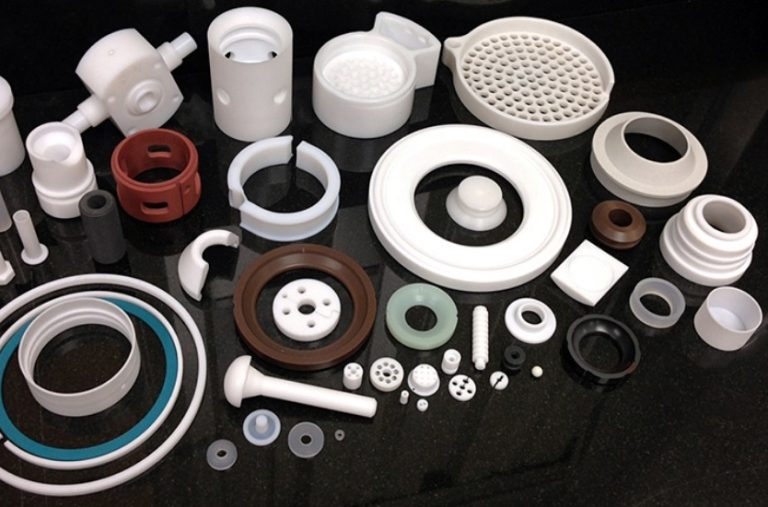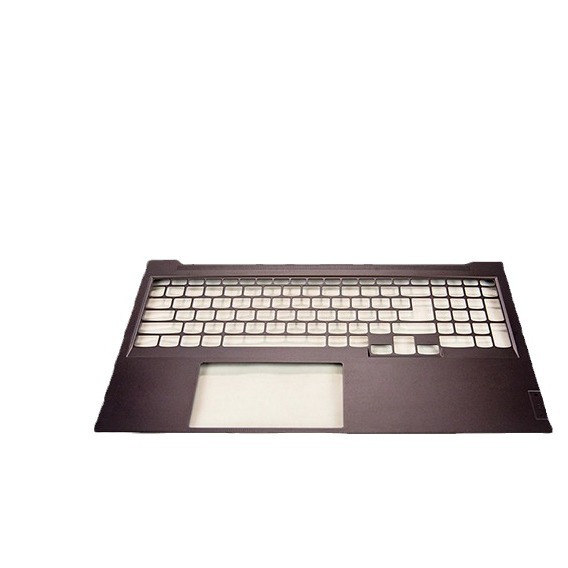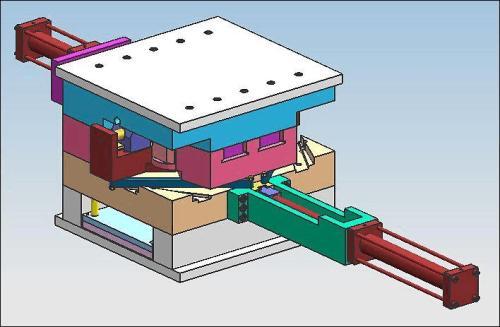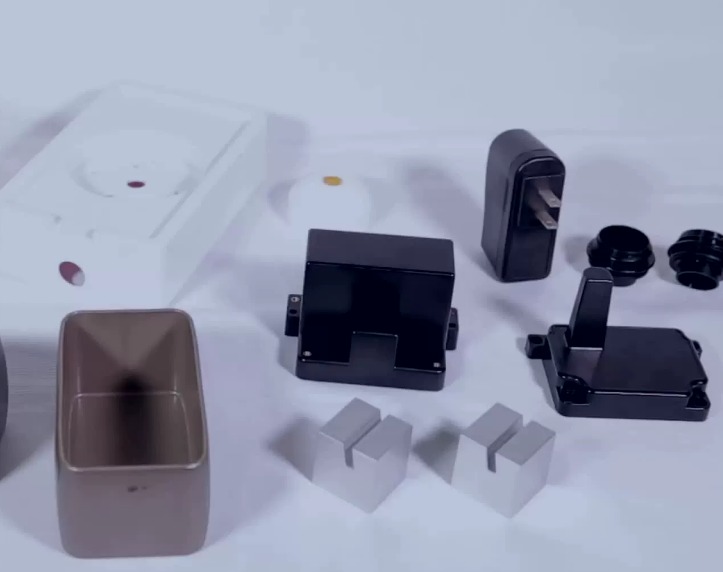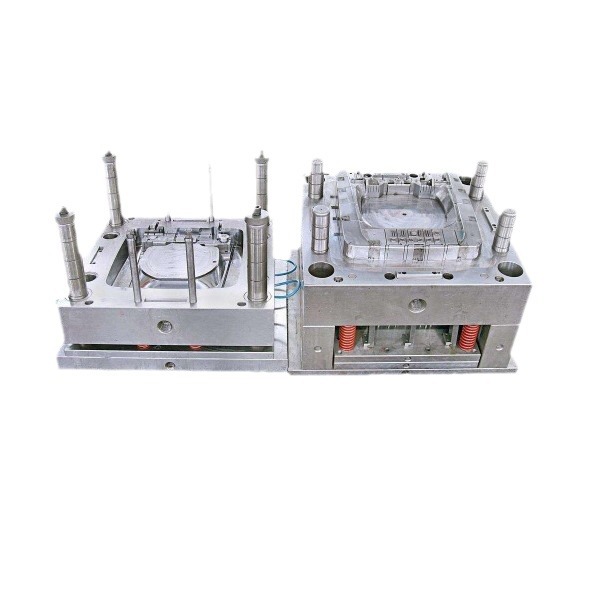Introduction
In the dynamic and highly competitive automotive manufacturing industry, Injection Molded Plastic Auto Parts have emerged as a cornerstone of modern vehicle production. These parts play a crucial role in enhancing the overall performance, aesthetics, and functionality of automobiles. From the sleek exteriors that catch the eye on the road to the comfortable and ergonomic interiors that provide a pleasant driving experience, and even the complex components under the hood that ensure smooth operation, injection molded plastic auto parts are everywhere.
The importance of these parts cannot be overstated. They have revolutionized the automotive manufacturing process, offering a plethora of advantages over traditional materials and manufacturing methods. For automotive manufacturers, understanding the ins and outs of injection molded plastic auto parts is no longer a luxury but a necessity. This guide aims to serve as a comprehensive resource, providing in - depth knowledge about these parts, from their manufacturing process and material selection to quality control and cost - effectiveness analysis. Whether you are a seasoned automotive manufacturer looking to optimize your production processes or a newcomer to the industry eager to learn the ropes, this guide will equip you with the knowledge and insights to make informed decisions and stay ahead in the automotive manufacturing game.
The Basics of Injection Molded Plastic Auto Parts
What are Injection Molded Plastic Auto Parts?
Injection Molded Plastic Auto Parts are components manufactured through the injection molding process, a highly efficient and widely used method in the automotive industry. The process begins with plastic pellets, which are fed into an injection molding machine. The machine heats the pellets until they reach a molten state, typically between 180 - 300°C depending on the type of plastic. A reciprocating screw then forces the molten plastic under high pressure, usually in the range of 50 - 200 MPa, into a precisely designed mold cavity. Once the cavity is filled, the plastic cools and solidifies, taking on the shape of the mold. Finally, the mold opens, and the newly formed plastic part is ejected. This process allows for the mass production of complex - shaped auto parts with high precision and consistency. For example, a dashboard in a car, with its various contours, grooves for buttons, and ventilation ducts, can be produced as a single injection - molded plastic part.
Common Types of Plastics Used in Automotive Injection Molding
- ABS (Acrylonitrile Butadiene Styrene): ABS is a popular choice in automotive injection molding due to its excellent 综合性能. It has a high impact strength, which makes it suitable for parts that may be subject to physical stress, such as bumpers and interior trim components. Its chemical stability means it can resist degradation from exposure to various automotive fluids like oil and gasoline. With good electrical properties, it is also used in parts related to the electrical system. For instance, ABS is often used in the housing of car audio systems. It has a density of around 1.05 g/cm³, The molding shrinkage rate of a is 0.4-0.7%, and the molding temperature range of a is 200-240°C.
- PC (Polycarbonate): PC is known for its high - strength and heat - resistance. It can withstand temperatures up to around 130 - 140°C continuously, making it ideal for parts under the hood, like engine covers. Its outstanding impact resistance is even better than ABS in some cases, and it has good dimensional stability. PC is also transparent, which leads to its use in applications such as headlight lenses. The density of PC is about 1.2 g/cm³, the molding shrinkage rate is 0.5-0.7%, and the molding temperature is 270-320°C.
- PP (Polypropylene): PP is a lightweight plastic with a density of only 0.9 - 0.91 g/cm³, which helps in reducing the overall weight of the vehicle, thereby improving fuel efficiency. It has good chemical resistance and is relatively inexpensive. PP is commonly used in interior components like seat covers, floor mats, and door panels. It has a high molding shrinkage rate of 1.0-2.5% and a molding temperature range of 160-220°C.
Tips for Automotive Manufacturers
Partnering with the Right Supplier
Selecting the right supplier of injection molded plastic auto parts is a critical decision for automotive manufacturers. Here are some key factors to consider:
- Experience and Expertise: Look for suppliers with a proven track record in the automotive industry. A supplier with years of experience is more likely to have encountered and solved a wide range of manufacturing challenges. For example, a supplier that has been in the business for over 10 years may have dealt with complex part designs, tight tolerances, and high - volume production requirements. They can offer valuable insights based on their past projects, helping manufacturers avoid common pitfalls.
- Production Equipment: State - of - the - art production equipment is essential for high - quality injection molded parts. Advanced injection molding machines can offer better control over the molding process, resulting in parts with more consistent quality. For instance, machines with servo - hydraulic systems can provide precise control over injection pressure and speed, reducing the likelihood of defects such as flash or short shots.
- Quality Control System: A robust quality control system is non - negotiable. The supplier should have a comprehensive set of quality checks at every stage of production, from raw material inspection to final product testing. They should adhere to international quality standards such as ISO 9001. For example, random sampling and in - depth inspection of parts during production can help identify and rectify any quality issues early on, ensuring that the final products meet the required specifications.
Design Optimization
Optimizing the design of injection molded plastic auto parts can lead to improved performance, reduced production costs, and shorter production cycles. Here are some design optimization tips:
- Wall Thickness Uniformity: Maintaining uniform wall thickness is crucial. Uneven wall thickness can cause issues such as warping, shrinkage, and longer cooling times. For example, in the design of a plastic dashboard, if one section has a significantly thicker wall than others, it will cool at a different rate, leading to internal stresses that can cause the dashboard to warp. The ideal wall thickness for most injection molded plastic auto parts ranges from 1.5 - 3 mm, depending on the plastic material and the part's function.
- The design of reinforcing ribs: Reinforcement ribs are an effective way to enhance the strength of plastic parts without increasing wall thickness. They should be placed in areas that are likely to experience stress, such as the edges or corners of a part. For example, in a car door panel, reinforcement ribs can be added along the edges to increase its resistance to bending forces. The height of the reinforcement rib should generally not exceed three times the wall thickness, and the thickness should be about 50 - 60% of the wall thickness.
To illustrate the impact of design optimization, consider the following comparison of a part before and after optimization:
| Design Aspect | Before Optimization | After Optimization |
| Wall Thickness | Uneven, ranging from 1 - 5 mm | Uniform, 2.5 mm |
| Reinforcement Rib Design | None | Added in stress - prone areas, with height 2 times wall thickness and thickness 50% of wall thickness |
| Warping Rate | 15% of parts | 3% of parts |
| Cooling Time | 60 seconds | 40 seconds |
Testing and Validation
Testing and validation are essential steps to ensure that injection molded plastic auto parts meet the high - performance and safety standards of the automotive industry. Here are some common testing methods:
- Mechanical Performance Testing: This includes tests such as tensile strength testing, where a part is pulled until it breaks to measure its maximum tensile load. A typical requirement for an automotive plastic part used in a structural component might be a minimum tensile strength of 30 MPa. Impact testing is also crucial, simulating real - world impacts to evaluate a part's ability to withstand sudden forces. For example, a bumper made of injection molded plastic should be able to withstand a certain level of impact energy without cracking or deforming significantly.
- Environmental Testing: Parts need to withstand various environmental conditions. Temperature - humidity cycling tests expose parts to a range of temperatures (e.g., from - 40°C to 120°C) and humidity levels (e.g., 10 - 95% RH) to simulate different climates and usage scenarios. Chemical resistance testing checks how parts react to exposure to automotive fluids like gasoline, oil, and coolant. For instance, a plastic fuel tank component should not degrade or lose its structural integrity when in contact with gasoline for an extended period.
Yigu Technology's Viewpoint
As a non - standard plastic metal products custom Supplier, Yigu Technology understands the significance of injection molded plastic auto parts in the automotive industry. We pride ourselves on our ability to offer customized solutions for automotive manufacturers. Our state - of - the - art manufacturing facilities allow us to handle complex part designs with precision.
We have a team of experienced engineers who can work closely with manufacturers from the initial design stage, providing valuable insights on material selection and design optimization to ensure the best - performing parts. Yigu Technology also emphasizes quality control, adhering to strict quality standards at every production step. We are committed to delivering high - quality injection molded plastic auto parts that meet and exceed the expectations of automotive manufacturers, helping them enhance their product competitiveness in the market.
Conclusion
Injection Molded Plastic Auto Parts have become an integral part of modern automotive manufacturing. Their manufacturing process, from the heating and injection of plastic pellets to the cooling and ejection of the final part, is a marvel of engineering precision. The selection of plastics like ABS, PC, and PP, each with their unique properties, offers automotive manufacturers a wide range of options to meet different part requirements.
For automotive manufacturers, following the right strategies is essential. Partnering with an experienced and well - equipped supplier, optimizing part designs for better performance and cost - effectiveness, and conducting thorough testing and validation are all crucial steps. These measures not only ensure the production of high - quality parts but also contribute to the overall success of automotive manufacturing projects, whether it's enhancing vehicle performance, improving fuel efficiency, or reducing production costs.
In today's competitive automotive market, embracing the advantages of injection molded plastic auto parts and implementing the best practices discussed in this guide can give manufacturers a significant edge. By doing so, they can produce vehicles that are not only of high quality but also more in line with the evolving demands of consumers for better - performing, more fuel - efficient, and aesthetically pleasing automobiles.
